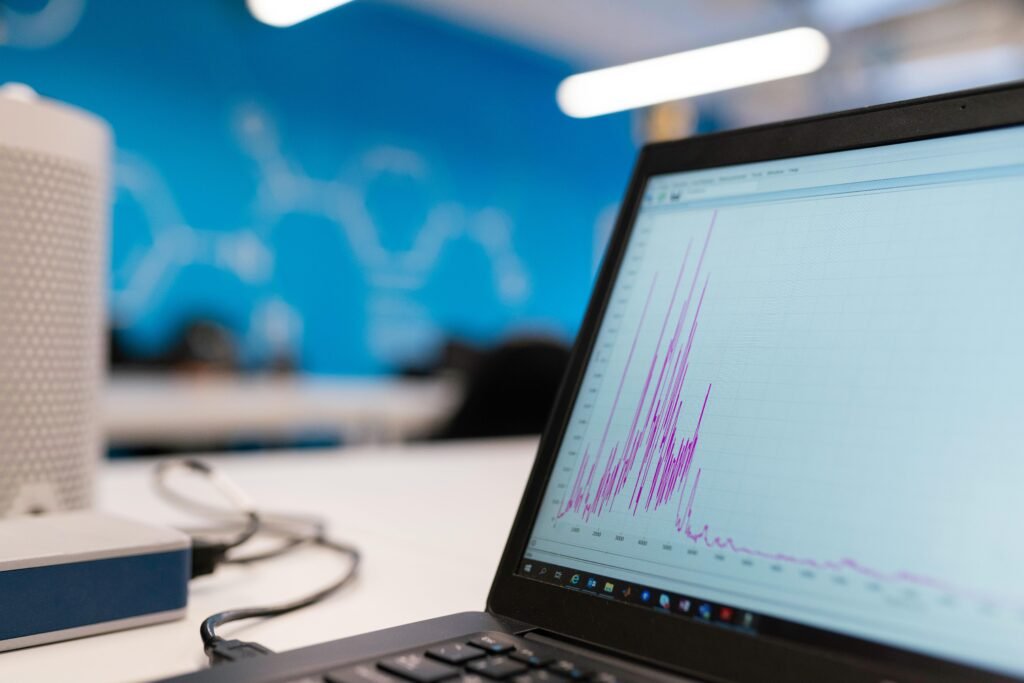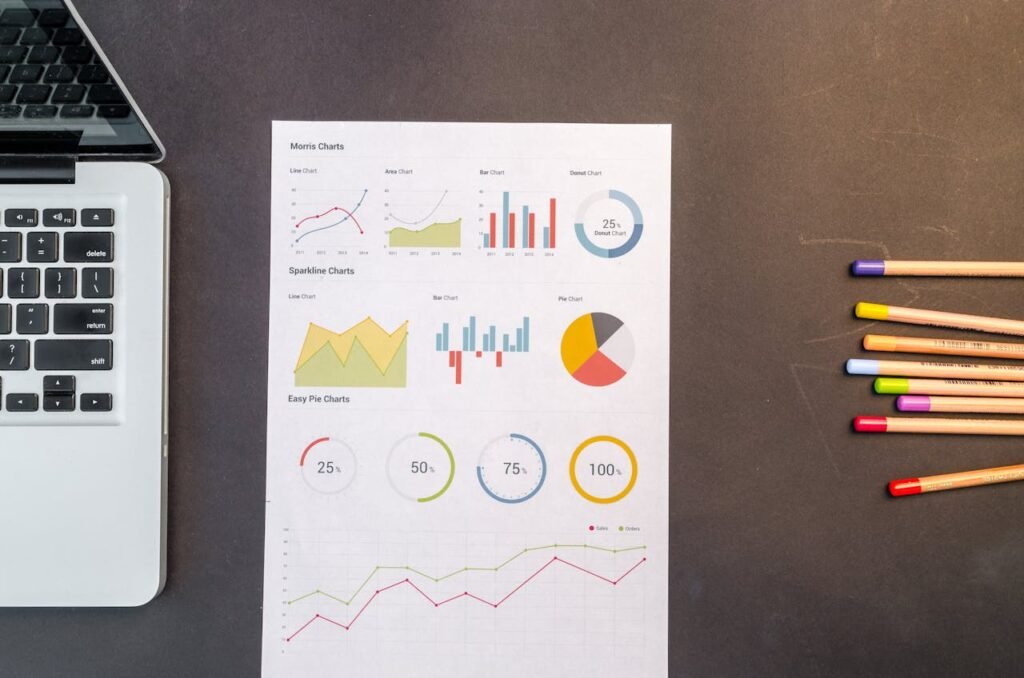Ad bidding analytics is a powerful tool that can help you optimize your Google Ads campaigns and achieve your business goals.
Whether you want to increase sales, website traffic, or brand awareness, ad bidding analytics can help you set the right bids for each auction, leverage AI-powered smart bidding strategies, and measure your conversion performance. With ad bidding analytics, you can:
- Use historical data and competitive insights to create a realistic and effective ad budget
- Choose from six different bidding strategies to align with your campaign objectives and target audience
- Track your ad spend and ROI with real-time reports and dashboards
- Experiment with different bid adjustments and scenarios to find the best fit for your campaigns
- Learn from best practices and tips to improve your ad performance and grow your business
Don’t miss out on this opportunity to take your Google Ads campaigns to the next level. Start using ad bidding analytics today and see the difference for yourself.
Why Choose Ad Bidding Analytics?

Bidding analytics is the use of data and technology to improve the bidding process and strategy. Bidding analytics can help you:
- Track and measure your bid performance and win rate
- Identify your strengths and weaknesses as a bidder
- Benchmark your performance against competitors and market trends
- Optimize your bidding decisions and resource allocation
- Increase your chances of winning profitable contracts
Bidding analytics can be applied to various sectors and industries, such as energy, manufacturing, life sciences, oil and gas, and parcel delivery¹²³. Bidding analytics can help you gain a competitive edge in these markets, where bidding is often complex and dynamic.
How does Bidding help with the 5 listed factors above?
Bidding analytics can help you with the 5 listed factors above in the following ways:
#1. Track and measure your bid performance and win rate:
Bidding analytics can help you collect and analyze data on your past and current bids, such as the bid amount, the bid strategy, the bid outcome, the client feedback, and the contract value.
This can help you understand how well you are performing as a bidder, and what factors influence your success. You can also use bidding analytics to set and monitor your bid performance goals and metrics, such as the win rate, the return on investment, and the customer satisfaction .
#2. Identify your strengths and weaknesses as a bidder:
Bidding analytics can help you identify your strengths and weaknesses as a bidder, such as the types of projects, clients, or markets that you are more or less successful in.
You can also use bidding analytics to assess your capabilities and resources, such as your team skills, your bid quality, your bid process, and your bid tools. This can help you leverage your strengths and address your weaknesses, and improve your overall bid competitiveness .
#3. Benchmark your performance against competitors and market trends:
Bidding analytics can help you benchmark your performance against your competitors and market trends, such as the bid prices, the bid strategies, the bid win rates, and the customer preferences.
You can use bidding analytics to gather and compare data from various sources, such as your own bid history, your competitors’ bid history, your clients’ feedback, and the industry reports. This can help you gain insights into your relative position and performance in the market, and identify the gaps and opportunities for improvement.
#4. Optimize your bidding decisions and resource allocation:
Bidding analytics can help you optimize your bidding decisions and resource allocation, such as which projects to bid for, how much to bid, how to bid, and how to allocate your time, money, and people.
You can use bidding analytics to apply data-driven methods and models, such as the bid scoring, the bid optimization, the bid simulation, and the bid forecasting. This can help you make more informed and effective bidding decisions, and maximize your bid value and efficiency
#5. Increase your chances of winning profitable contracts:
Bidding analytics can help you increase your chances of winning profitable contracts, by helping you improve your bid performance, identify your strengths and weaknesses, benchmark your performance, and optimize your bidding decisions.
Bidding analytics can also help you create more compelling and persuasive bid proposals, by helping you tailor your bid content, design, and delivery to your clients’ needs and expectations. This can help you increase your bid quality and attractiveness, and ultimately win more contracts that are profitable and satisfying .
How to set bidding analytics
Setting up bidding analytics requires some steps and tools. Here are some general guidelines:
#1. Define your ad performance goals and metrics
Define your bid performance goals and metrics, such as win rate, return on investment, customer satisfaction, etc.
#2. Collect and organize your bid data
Collect and organize your bid data, such as bid amount, bid strategy, bid outcome, client feedback, contract value, etc. You can use tools like Excel, Power BI, or Tableau to store and visualize your data.
#3. Analyze your bid data
Analyze your bid data to identify your strengths and weaknesses, benchmark your performance against competitors and market trends, and optimize your bidding decisions and resource allocation.
You can use tools like R, Python, or SAS to perform statistical and predictive analysis on your data.
#4. Create and present your bid proposals
Create and present your bid proposals based on your data analysis and client needs. You can use tools like Word, PowerPoint, or Adobe to create and deliver your bid documents.
These are some basic steps and tools for setting up bidding analytics. However, the exact process and tools may vary depending on your specific project and industry.
What factors influence Bidding Analytics decisions?
Some of the factors that influence Bidding Analytics decisions are:
- The number and quality of incoming tender opportunities and the win/loss ratio of the company.
- The closeness of competition and the competitive constraints imposed by other players in the market.
- The contract characteristics and the customer preferences and behavior.
- The market price development and the risk assessment of the bids.
- The team performance and the service methodologies of the company.
Bidding Analytics can help a company achieve competitive advantage by providing deeper insights into the bid-related data and identifying patterns and outliers that can inform the bidding strategy and improve the win rate.
How to determine the right bid amount with bidding analytics
Bidding analytics is the process of using data to improve bid success and optimize bid strategies. It can help you to:
- Identify the most profitable and competitive bids
- Estimate the probability of winning a bid
- Analyze the strengths and weaknesses of your competitors
- Adjust your bid price and other factors based on market conditions and customer preferences
- Learn from past bids and improve your future performance
There are different types of bidding analytics, such as descriptive, predictive, and prescriptive analytics. Each type has its own benefits and limitations, and you should choose the one that best suits your business problem and data availability.
One common technique for bidding analytics is to use vendor bid analysis, which is a method of comparing and evaluating the bids from different suppliers based on various criteria, such as price, quality, delivery time, etc. This can help you to select the best supplier for your project, or to benchmark your own bid against the competitors.
To perform vendor bid analysis, you can follow these steps:
- Calculate the mean of all the bids
- Discard those that are not within a certain predetermined number of percentage points (say, 15%) from the mean
- Award the bid to the lowest, average, or most qualified bidder in the middle
Another technique for bidding analytics is to use machine learning, which is a branch of artificial intelligence that can learn from data and make predictions or recommendations. Machine learning can help you to:
- Discover patterns and trends in your bidding data
- Generate optimal bid prices based on historical and current data
- Simulate the effect of different bid scenarios and strategies
- Identify the key factors that influence bid outcomes
- Enhance your decision making with data-driven insights
To use machine learning for bidding analytics, you need to have a large and reliable data set that covers various aspects of your bidding process, such as bid/no bid decisions, win/loss ratios, lessons learned, competition, etc. You also need to have a clear objective and a suitable model that can capture the complexity and uncertainty of your bidding environment.
What metrics to monitor with Bidding Analytics?
Some of the metrics that you can monitor with bidding analytics are:
#1. Bid success rate:
the percentage of bids that you win out of the total number of bids that you submit. This metric can help you measure your overall bidding performance and competitiveness.
#2. Bid profitability:
the difference between the revenue and the cost of a bid. This metric can help you evaluate the financial return and value of each bid and identify the most profitable and strategic opportunities.
#3. Bid cycle time:
the duration of the bidding process from the identification of an opportunity to the submission of a bid. This metric can help you assess the efficiency and effectiveness of your bidding process and identify areas for improvement.
#4. Bid quality:
the degree to which your bid meets the customer’s requirements and expectations. This metric can help you ensure that your bid is aligned with the customer’s needs and preferences and that you deliver a high-quality proposal.
#5. Bid risk:
the likelihood and impact of potential threats or uncertainties that may affect your bid outcome. This metric can help you anticipate and mitigate the factors that may jeopardize your bid success, such as competition, price fluctuations, customer behavior, etc.
You can use different types of bidding analytics, such as descriptive, predictive, and prescriptive analytics, to monitor and improve these metrics.
For example, you can use descriptive analytics to track your historical bid performance and trends, predictive analytics to forecast your future bid outcomes and probabilities, and prescriptive analytics to optimize your bid strategies and decisions.
What challenges arise with Bid Analytics?
Bid Analytics is the process of using data to improve the success and efficiency of competitive bidding. Some of the challenges that arise with Bid Analytics are:
#1. Data quality and availability:

Bidding data may be scattered across different systems, incomplete, inconsistent, or outdated. This makes it hard to aggregate, classify, and analyze the data for meaningful insights.
#2. Data complexity and diversity:
Bidding data may involve multiple criteria, variables, and scenarios that affect the outcomes and performance of bids. It may also require different types of analysis, such as descriptive, diagnostic, predictive, or prescriptive.
#3. Data interpretation and communication:
Bidding data may be difficult to understand, visualize, and communicate to stakeholders. It may also require human judgment and expertise to validate, contextualize, and apply the data to decision-making.
How do you overcome the challenges?
To overcome these challenges, bidding organizations need to adopt a data-driven approach that leverages advanced analytics, machine learning, and automation. This can help them to:
#1. Improve data quality and availability:
By integrating and standardizing data from various sources, and ensuring data accuracy and timeliness.
#2. Reduce data complexity and diversity:
By using data models and algorithms that can handle multiple dimensions, patterns, and scenarios of bidding data, and provide relevant and actionable insights.
#3. Enhance data interpretation and communication:
By using data visualization and reporting tools that can present data in a clear and engaging way, and support data-driven storytelling and collaboration.
Are there best practices for bid analytics?
There are different types of bid analytics, such as descriptive, diagnostic, predictive, and prescriptive. Each type has its own benefits and challenges, and it is important to choose the one that best suits the business problem. Some of the best practices for bid analytics are:
- Define clear and measurable objectives and KPIs for bidding activities.
- Collect and integrate data from various sources, such as ERP systems, CRM systems, market research, and bid management tools.
- Classify and standardize data into common or use-case-specific taxonomies.
- Use data visualization and business intelligence tools to present data in a user-friendly and interactive way.
- Apply advanced analytics techniques, such as machine learning, to identify patterns, trends, and correlations in data.
- Use data-driven models to forecast future bid outcomes and probabilities, and compare them with historical results.
- Use prescriptive analytics to optimize bid strategies and actions, and test different scenarios and alternatives.
- Monitor and evaluate the results and impacts of bidding activities, and continuously update and improve the data and models.
- Automate repetitive and manual tasks in bidding processes, and focus on strategic decision-making and relationship management.
- Leverage data and insights across the organization, and share best practices and lessons learned with other functions and stakeholders.
How does bid analytics align with overall marketing goals?
Bid analytics is the process of using data to optimize and improve the performance of competitive bidding strategies. It can help businesses achieve various marketing goals, such as:
#1. Increase traffic
Increasing traffic to the website by choosing the best keywords, ad formats, and bid amounts for each campaign.
#2. Increase brand awareness
Increasing brand awareness by targeting the right audience, using effective ad copy, and adjusting bids based on factors such as location, device, and time of day.
#4. Increase conversions
Increasing conversions by using Smart Bidding, which leverages Google AI to automatically set the optimal bid for each auction, based on the likelihood of a user completing a desired action.
#5. Increase product or brand consideration
Increasing product or brand consideration by using video ads and bidding strategies that focus on views or interactions, such as cost-per-view (CPV) or cost-per-thousand-impressions (CPM).
#6. Improve bid success
Improving bid success by using data analytics to identify trends, patterns, and correlations that affect the outcomes of competitive bids, such as bid/no bid decisions, win/loss ratios, lessons learned, and competition.
Bid analytics can help businesses gain a competitive edge in the market, as well as measure and improve their return on investment (ROI) from their bidding campaigns. By using data to inform and optimize their bid strategies, businesses can align their bidding goals with their overall marketing goals and achieve better results.
What Success Stories Exist with Bid Analytics?
Some examples of success stories are:
#1. CIO Magazine
CIO magazine featured five data analytics success stories from different industries, including a construction company that used bid analytics to optimize its pricing strategy and win more profitable projects.
#2. Bidhive
Bidhive, a bid management software, published a whitepaper on how analytics can help bidding organizations create a data-driven roadmap, identify root causes, and predict outcomes.
#3. MIT Sloan
MIT Sloan shared 21 stories on how data analytics can boost various aspects of business, such as innovation, customer experience, and social impact. One of the stories was about a startup that used bid analytics to win government contracts and grow its revenue by 300%.
What tools facilitate bid analytics?
There are many tools that can facilitate bid analytics, depending on your needs and goals. Some of the tools that I found from my web search are:
#1. Acquisio:
A PPC automation tool that streamlines your campaign by tracking and adjusting search, social and display ads. It also provides predictive and launching support, and a user-friendly dashboard that compiles data from various search engines.
#2. MarinOne:
A bid management platform that unifies marketing efforts between Amazon, Facebook, and Google. It uses AI to discover the best keywords and clustering, and provides special measures for different industries.
#3. Kenshoo:
A bid management tool that accommodates various sizes of operations, from global advertisers to local entrepreneurs. It capitalizes on digital media marketing, and stands out in its app presence, ranking and retention.
#4. Adalysis:
A bid management tool that uses algorithms to set up the right checks for your business, and provides actionable advice. It also offers metrics-based testing, and automated bid management features.
#5. Bidhive:
A bid management software that publishes a whitepaper on how analytics can help bidding organizations create a data-driven roadmap, identify root causes, and predict outcomes.
Conclusion
Based on the comprehensive information provided in your article about ad bidding analytics, it’s clear that this approach is crucial to greatly optimize marketing strategies. Despite challenges and obstacles that can come with using this method, utilizing appropriate tools and metrics can help marketers overcome these difficulties successfully. Furthermore, ad bidding analytics aligns well with overall marketing goals and provides the opportunity for businesses to make informed decisions regarding their return on investment (ROI). Overall, through proper utilization of ad bidding analytics, businesses can gain a competitive advantage by increasing ROI while achieving their marketing objectives effectively.




